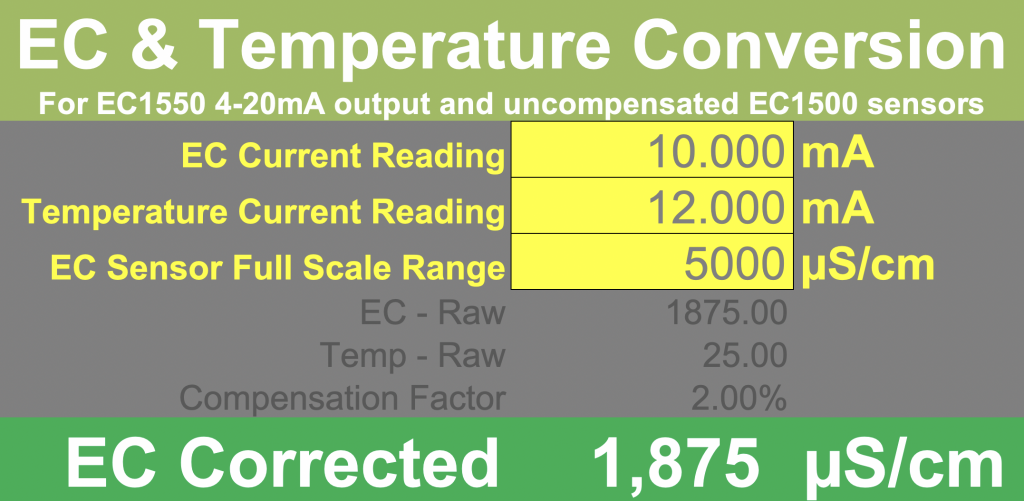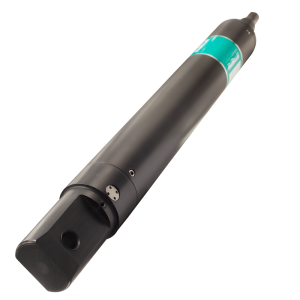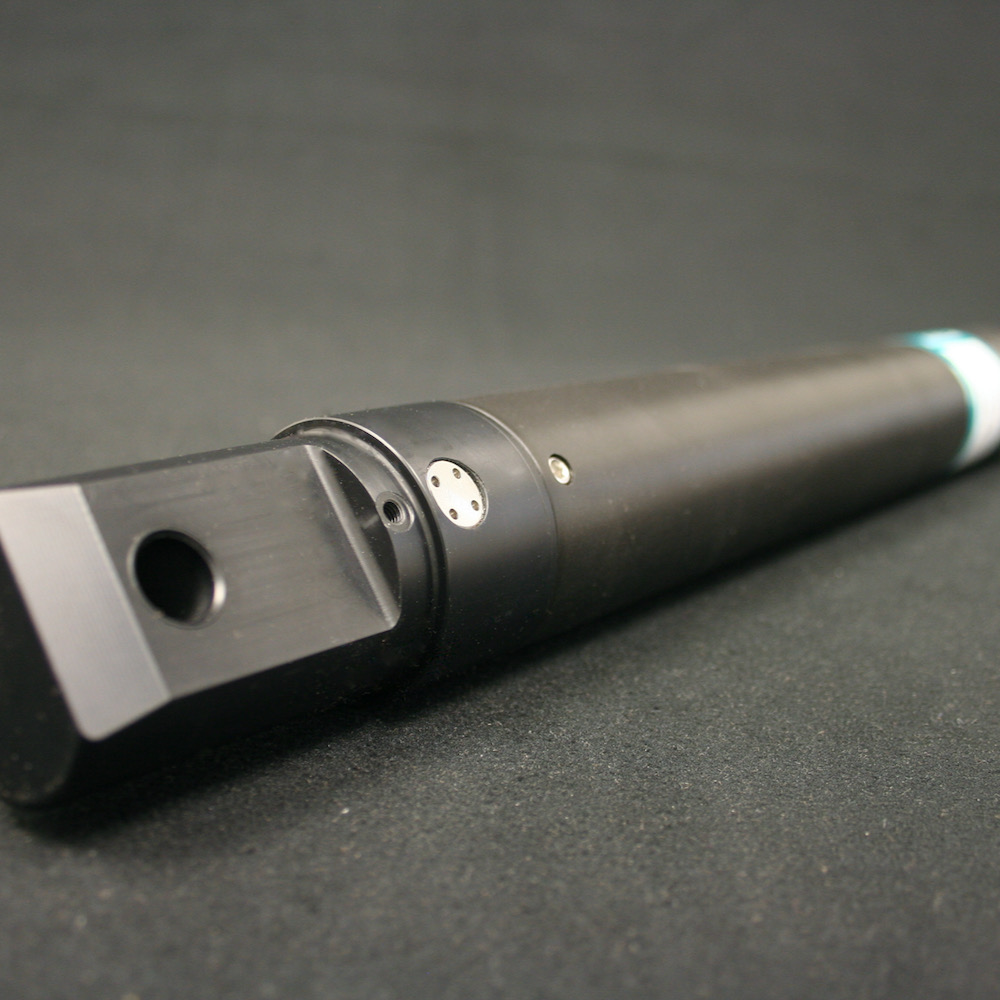Free EC & Temperature Conversion Calculator
ESS Earth Sciences handy EC calculator converts the analogue output of the EC1550 Electrical Conductivity and Temperature sensor into corrected EC. Our EC calculator can also be used with uncompensated output EC1500 sensors.
To use the EC Calculator download and open this file using Microsoft Excel (or a compatible spreadsheet program). Once the EC Calculator is downloaded, type in your 4-20mA readings from your EC and Temperature analogue outputs, along with the full-scale range of your sensor. With these, the corrected EC value will be displayed.
EC Calculator

Electrical Conductivity, electrolytes, ions, and salinity

Electrical conductivity measured in Siemens (S) and represents a fluid’s ability to conduct electricity or pass an electrical flow. The temperature and concentration of free ions in the fluid determine electrical conductivity. Measuring the variables concurrently provides accurate results.
Hence, water’s electrical conductivity will tell us the concentration of salts or solids dissolved in the fluid; a higher concentration means higher conductivity.
The electrical conductivity of Deionized water (pure H2O) is around 5.5 uS/cm (at 25C) whereas seawater is approximately 50,000 uS/cm.
Therefore we can deduct it is the salt that affects electrical conductivity, not the water itself.
Conductivity increases when compounds dissociate into ions when they meet water. For Salt (Sodium Chloride) splitting into Na and Cl. The ions are then free to ‘move about’ and conduct electricity. More free ions equal greater electrical conductivity. Note we are using salt as a basic example, various other dissolved solids alter a fluid’s electrical conductivity and salinity.
Increases in the liquid’s temperature increase ion mobility and with it, conductivity. It is necessary to use temperature as a key variable to yield accurate results. To account for this, modern sensors measure temperature and EC concurrently and give a temperature-compensated output equivalent to 25°C.
Electrical conductivity sensors

Sensors such as the EC-1500/1550, EC-2500A/L, and The Greenspan Multi-Parameter Water Quality Sensor are ideal for this application. Instead of electrical contact probes, it uses an inductive (or magnetic) method to determine conductivity. By
using this approach, there is no direct contact with the liquid. Although more difficult to implement, this toroidal method is inherently more reliable and has a very low drift compared with electrode type sensors, and will operate for many years, even in difficult environments.